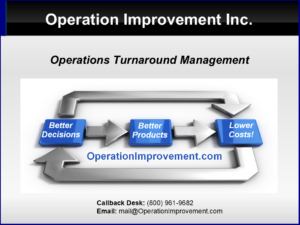Executive, Director, Manager, Front Line: Roles and Responsibilities.
The attempt to dissect operations responsibilities into “strategizing”, “improving” and “doing” is an unworkable over-simplification.
The broadest distinction is created by acknowledging the limitations imposed by “available means”. For decades we have been calling this limited authority: “Tactical”. Tactical responsibilities are those that we expect to accomplish with available means. In the case of process work, it means the available facilities, machinery, tools, automobiles, funded staff positions, computers and so on. “Tactical” means the monthly, quarterly, and annual P&L budget.
There are a lot of ways that these finite resources can be assembled and deployed. For example, in the context of process work, a budgeted line item for process improvement gives managers and front-line workers the leeway to try, evaluate and migrate to better workflows, work setup methods, etc.
In the context of project work, an IT project manager may spend budgeted funds on cloud resources or on enhancements to on-premises equipment. We call these discretionary decisions lower case “s” strategy, since a project manager, for example, may decide to proceed with either iterative or waterfall development. Nevertheless, the project management duties of organizing tasks, resource and time to meet an objective are still tactical. Projects are constrained by a budget of resources and time.
The authority for providing resources to tactical teams is what we call “Strategic” responsibility. Program Managers or executives that have been given strategic responsibility is not constrained by available means. A Program Manager may have a portfolio of projects and multiple objectives that are weighted by value and risk, and then resources are allocated accordingly.
Strategic decision makers provision available means while weighing value and risk. These decision makers have “Balance Sheet” authority. Not limited by “available means, the strategist can decide when and where to borrow or pay off loans, increase or decrease office and manufacturing floor space, upgrade equipment and technology, change the staffing plan, and so on.
At the highest (“Policy”) level, Strategic decision makers are the final arbiter of “who is our customer”; to whom and how will the company seek provide products and services. (Government, Wholesale, Retail, Market Segment, Geography, Low Cost, Premium, Luxury)
“Quality begins with the intent, which is fixed by the management.” – Deming
In summary, we say that tactical managers and front-line workers are responsible for correct and consistent execution of work – given the available means. Strategic decision makers (Directors, Executives) are responsible for providing facilities that are capable of meeting and exceeding the customer’s expectations. Together, Strategic and Tactical need each other to produce a quality product or service.
At all levels of responsibility, there should be “doing” even though the difference in degree of responsibility results in a difference in the kind of doing.





